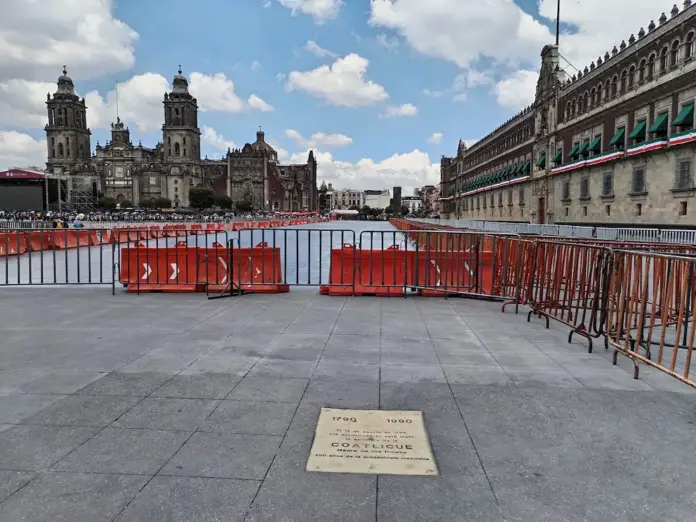
In Mexico City’s Zócalo, a place of great historical significance and where all kinds of marches and rallies are held, commemorative plaques were placed at the exact sites where important Aztec monoliths were discovered at the end of the 18th century.
These discoveries, which include the Coatlicue, the Piedra del Sol and the Piedra de Tízoc, marked a milestone in Mexican archaeology, according to the National Institute of Anthropology and History (INAH).
The exact place where the Piedra del Sol was found is located a few meters ahead of what are now the offices of the Mexico City Government, near Pino Suárez Street.
The commemorative plaque for the Piedra del Sol—an Aztec calendar—was replaced after having been stolen in previous years.
On the other hand, the plaque for the Coatlicue, which represents the mother goddess in the Tenocha religion, is located southeast of the Zócalo, near Corregidora Street.
The reinstallation of these plaques is the result of a dialogue between the INAH and the Secretariat of Public Works and Services of the Government of Mexico City.
The original plaques of the Coatlicue and the Piedra del Sol were created in 1990 to commemorate the bicentennial of Mexican archaeology, under the initiative of archaeologist Eduardo Matos Moctezuma. These plaques were placed back in their original locations, based on historical sources and archaeological data.
The Urban Archaeology Program (PAU) of the INAH, directed by Raúl Barrera Rodríguez, has been fundamental in this process. Barrera Rodríguez explained that the sculptures discovered in the Zócalo were analyzed by prominent scholars of the time, such as Antonio León y Gama and Guillermo Dupaix, and are considered the origin of archaeology in Mexico. In addition, he highlighted that these findings sparked a widespread interest in the New Spain population to learn about their past.
A third plaque, dedicated to the Stone of Tízoc, has been added as a novelty to the signage of the Zócalo. This plaque, located on the northwest side of the plaza, near Madero Street, bears the inscription “The conquests of the Huei Tlatoani” and offers information about the 9.5-ton monolith, which would have been created between 1481 and 1486 to commemorate the military triumphs of Tízoc and the conquests of the Triple Alliance.
The design of these plaques was carried out by Jonathan Tonatiuh Silva Pérez, graphic designer of the Museo del Templo Mayor, and their location was determined with the help of the PAU surveyor, Alfredo Reyes Castro. To ensure precision in the placement of the plaques, the INAH specialists used the “Historical and chronological description of the two stones” by Antonio de León y Gama, published in 1792, converting the viceregal measurements to meters.
Source: infobae






